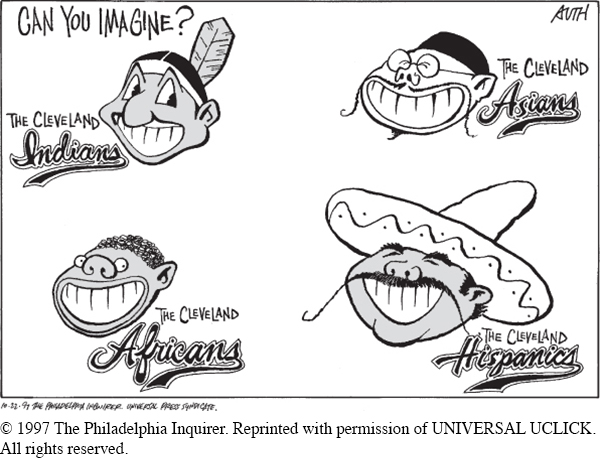The Benefits of Analogy
The primary benefit of drawing an analogy in an argument is that it appeals to an experience familiar to the audience. It makes a connection. The writers of Forrest Gump knew that pretty much everybody has bitten into a chocolate only to be disappointed by a filling that wasn’t expected or hoped for. This connection can be used in a number of different ways: to emphasize shared values (ethos), to assert what we all know to be true (logos), or to tap into strong emotions based on personal experience (pathos).

Take a look at the cartoon above by Tony Auth on the controversy about the name of the Cleveland Indians, a professional baseball team. He argues that the name is offensive by drawing an analogy to other similar names that reflect ethnic groups. So, if the Cleveland Indians is a perfectly acceptable name for a professional sports team, he claims through his cartoon, then why not the Cleveland Asians or Africans or Hispanics—